Can’t Afford The Property You Want In 2023? Here Are 4 Things You Can Do
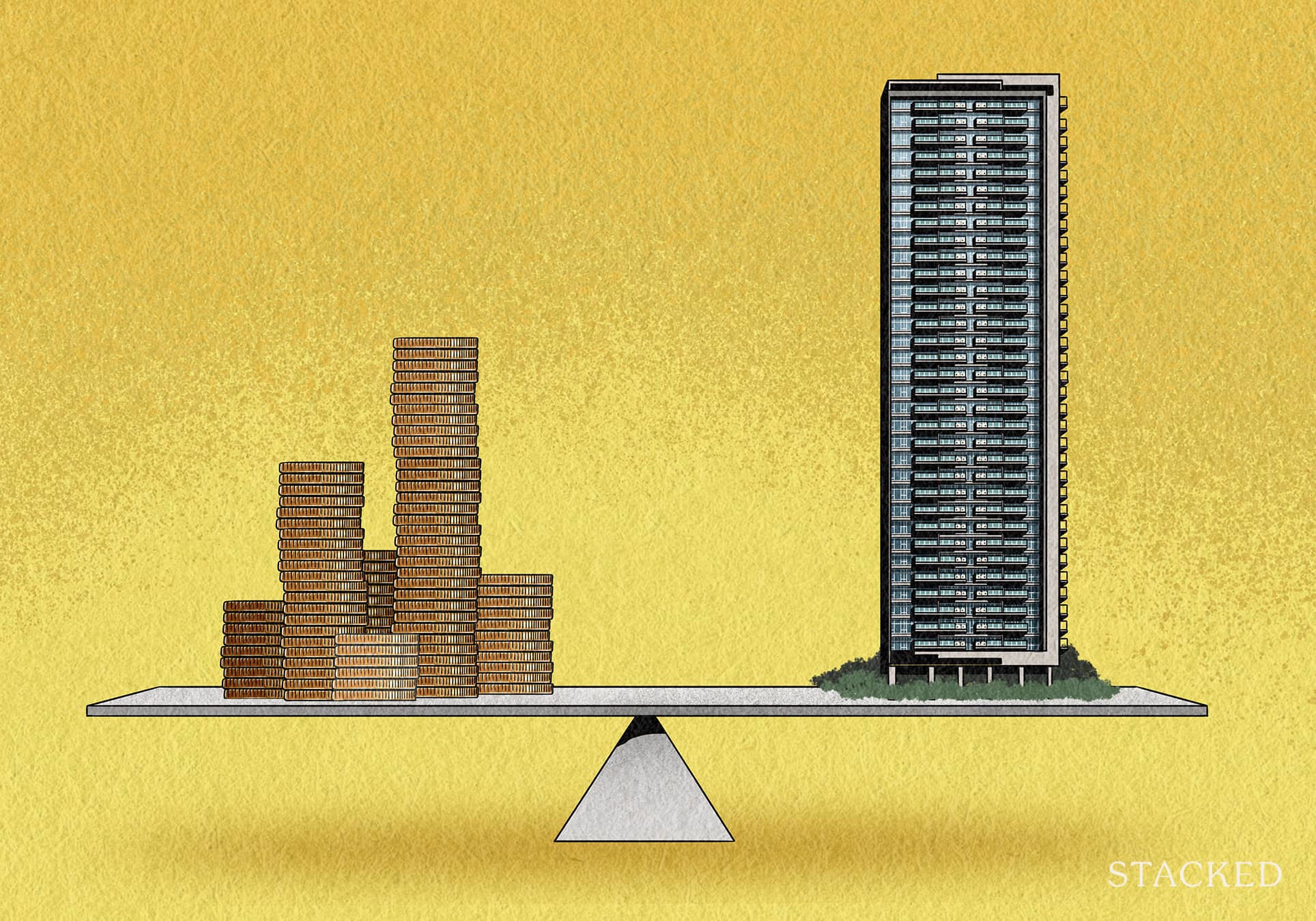
Get The Property Insights Serious Buyers Read First: Join 50,000+ readers who rely on our weekly breakdowns of Singapore’s property market.
A seasoned content strategist with over 17 years in the real estate and financial journalism sectors, Ryan has built a reputation for transforming complex industry jargon into accessible knowledge. With a track record of writing and editing for leading financial platforms and publications, Ryan's expertise has been recognised across various media outlets. His role as a former content editor for 99.co and a co-host for CNA 938's Open House programme underscores his commitment to providing valuable insights into the property market.
One of the common complaints we’ve been hearing is about buyers priced out of the property market in 2022. This is no longer just the case for first-time home buyers either: we even hear the same complaint from HDB upgraders, who have come to realise the unfortunate reality of an exuberant market: even though you sell high, you’ll probably end up having to buy high as well. For readers who are in the same situation, here are some steps you can consider:
1. If you’re refused a loan due to your income, try a bigger cash outlay or fixed deposit options
It’s possible that, if you qualified for a home loan a few years ago, you may no longer do so in 2023. The cause may be the floor rate used to calculate the Total Debt Servicing Ratio (TDSR), which has been set at four per cent as of September last year.
Here’s a quick example of how it may matter:
Say you and your co-borrower earn a combined $12,000 per month. Using a bank loan for a condo, your monthly home loan repayment would be capped at 55 per cent of your monthly income, or $6,600.
You were initially planning on a condo purchase of $1.8 million. The minimum down payment would be $450,000 (25 per cent), while you take a total loan of $1.35 million paid over 25 years.
The loan package is quoted at three per cent per annum. This would set monthly loan repayments at roughly $6,400 per month, which you would normally qualify for.
However, the new floor rate means the bank must use an assumed interest rate of four per cent, regardless of the real interest rate. This would raise your monthly repayment to about $7,125, and you no longer qualify.
To fix this, you need to make a bigger down payment, so that the monthly loan repayment decreases.
If you decrease your loan amount to $1.21 million, for example, the monthly loan repayment would fall to around $6,400 so you’d qualify. However, it comes at the cost of an added $140,000 to your initial cash outlay.
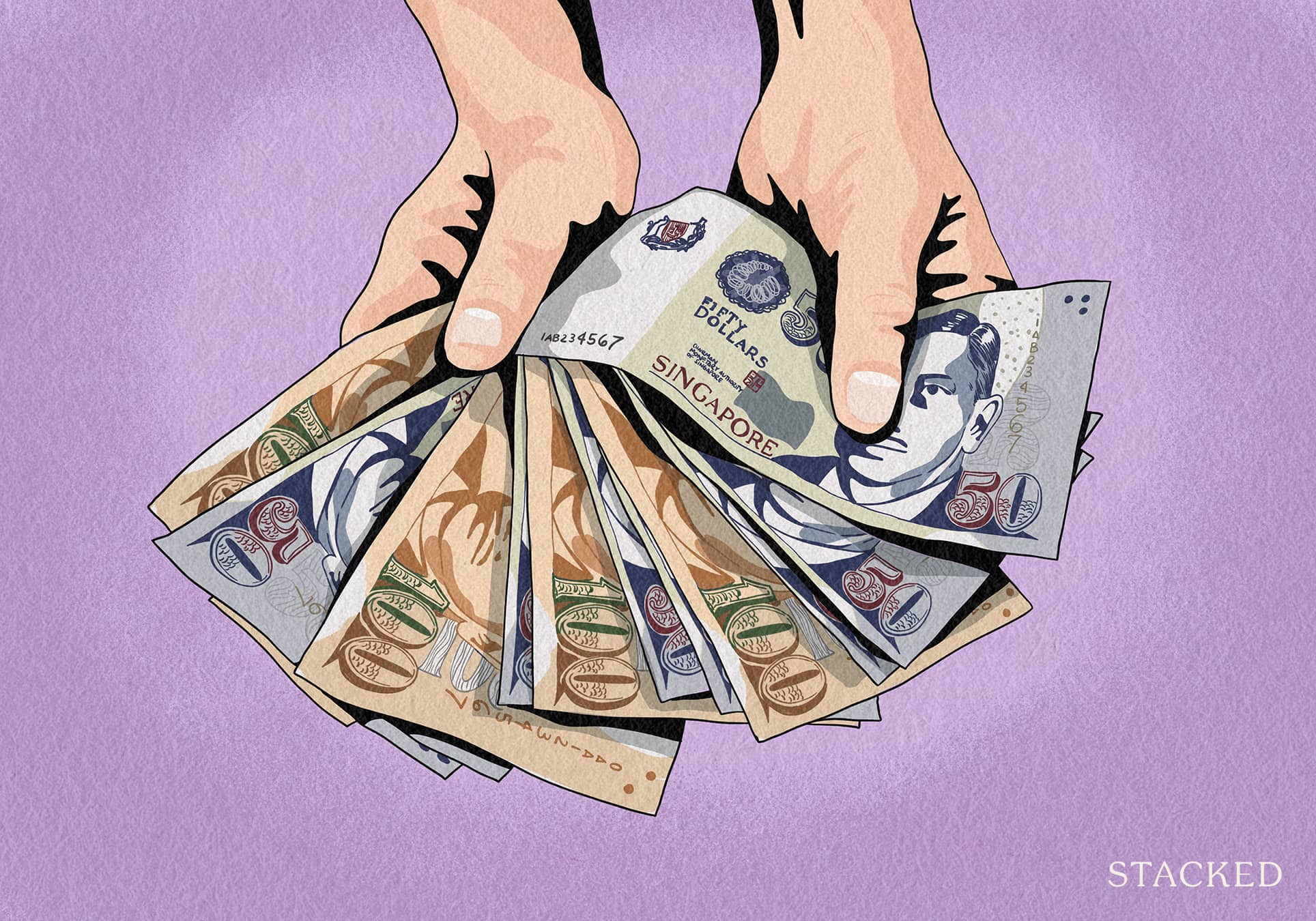
Some mortgage brokers, however, have told us there could be other ways besides a bigger down payment.
Some banks are willing to treat your income as being higher, if you can commit to a sizeable fixed deposit (e.g., if you commit to a $160,000 fixed deposit for the duration of your loan, the lender may be able to count your income as being $1,000 higher).
These policies vary between banks, and we understand that such deals are not publicised – you’ll usually need to discuss it with the mortgage banker, or go through a mortgage broker.
It’s true that either way, you’ll need more cash in hand; but the idea of committing to a fixed deposit may be more palatable to some people right now, as we’re entering a higher interest rate environment.
In the meantime, if you’re resigned to waiting to save up more, remember to adjust your targets accordingly.
If you’ll have problems meeting the TDSR, remember to plan for more than the minimum 25 per cent down payment, when setting your target sum. This is especially true if you have variable income (e.g., you work in the gig economy), as your assessed income will be treated as being 30 per cent lower.
We’re sure none of our readers are sneakily under-declaring their income, right? Because if you do, keep in mind it can be much harder to pass the TDSR framework.
2. Check the projects that are one kilometre away from your first choice
If you’re priced out of everything you’ve shortlisted, but really need a home, try roving a bit further out. Sometimes, a distance of just one more kilometre can make a significant difference in price; particularly if the original target was near a key amenity like a mall or MRT station.
There’s no denying you’ll cause yourself some inconvenience – it could mean you need to bike to the MRT station instead of walk, for example. But from experience, most people are quick to adapt to this small degree of difference.
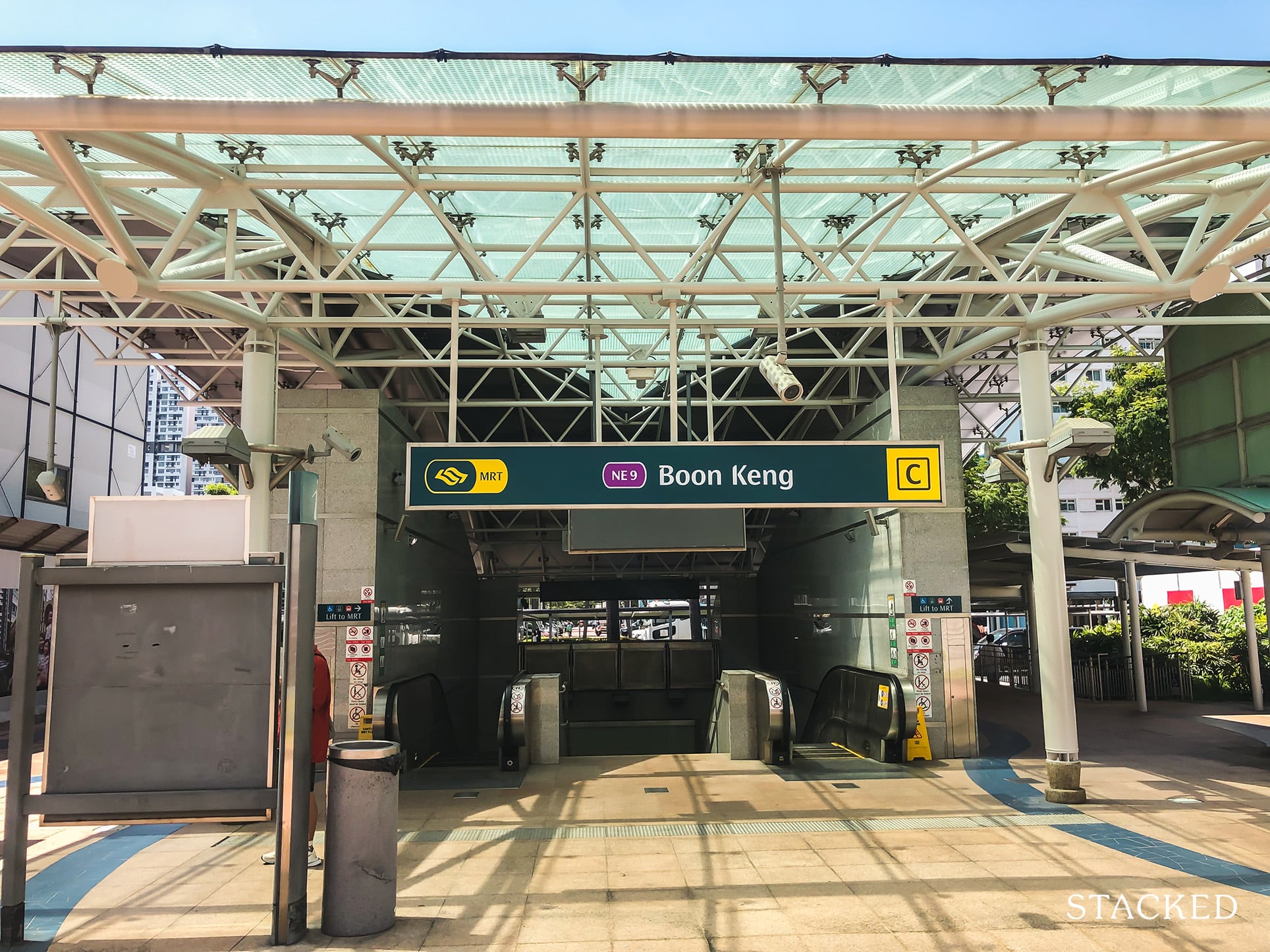
You’ll also find that, in most newer condos, there will be shuttle services that largely negate the difference in distance. For example, some buyers have found that the older condos in the Bayshore area have regular services that go to Bedok or Tanah Merah MRT station; and the sheer price difference may make these older condos a viable alternative to new launches like Sky Eden at Bedok, or Sceneca Residence.
For the sake of around eight to 10 minutes on a shuttle bus, this is a disparity of around $1,600 psf, versus the two newer launches at over $2,000 psf.
Of course, as always, judging affordability solely by psf isn’t always accurate. Older condos would typically come with bigger floor plates as well, so the resulting quantum may not always be cheaper in the favour of the older condo.
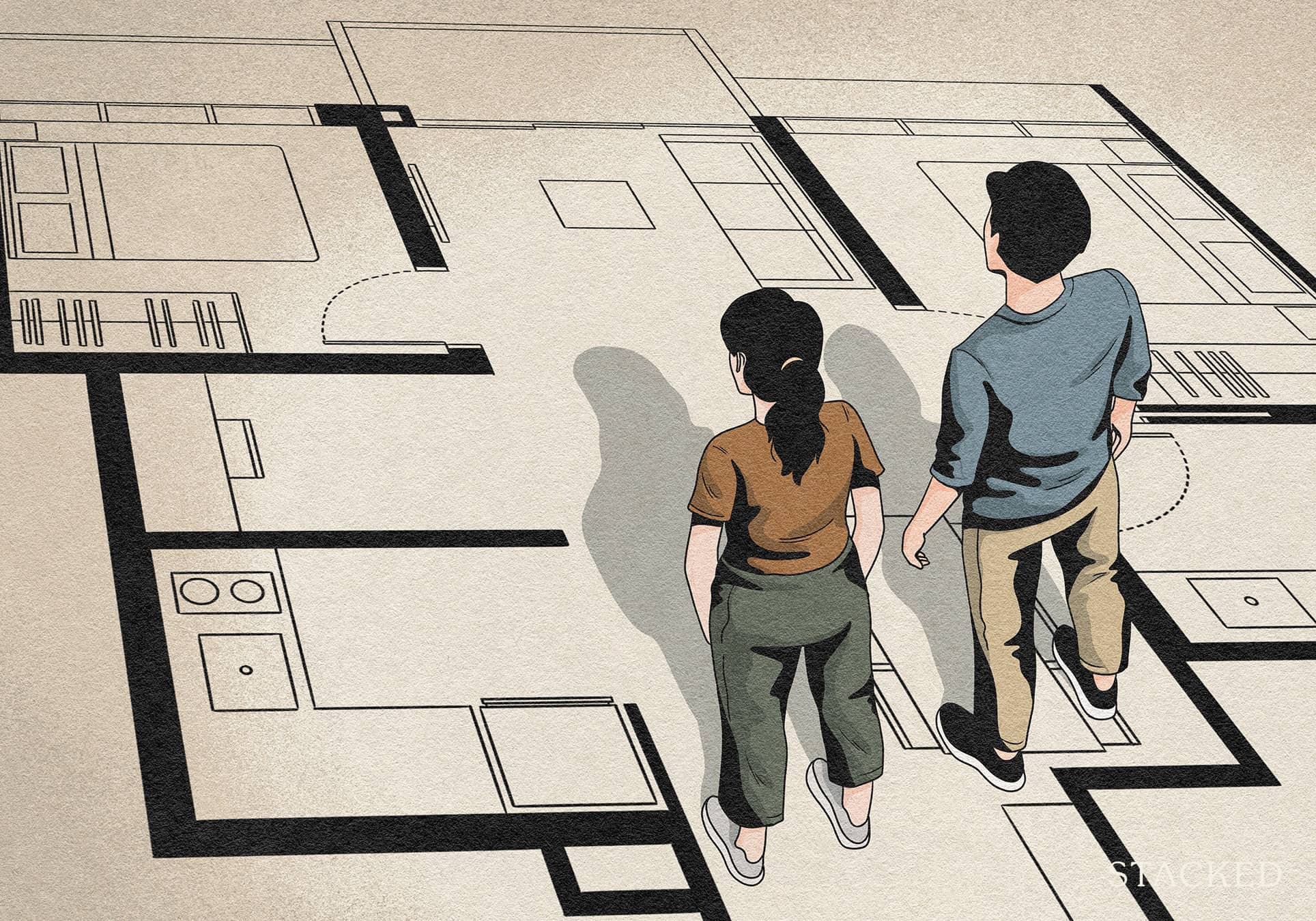
Homeowner StoriesMy Biggest Regrets After Buying A New Launch Condo: We Share 5 Most Common Regrets Homebuyers Have
by Sean Goh3. Check if different payment schemes work better for you
At a time when monthly loan repayments are rising, the Progressive Payment Scheme (PPS) is worth keeping in mind. As we detailed in our previous article, it can be quite some time (up to the point of completion) before you’re paying the entire monthly loan amount. For some buyers, this can be preferable to buying resale condos, where you need to pay a minimum of 25 per cent of the price upfront.
The catch is that new launches are expensive, and are always priced higher than existing resale counterparts. So while payments may be more comfortable at the start, keep in mind that you could still be paying more.
As a bonus, the PPS adds a layer of safety at a time when the construction industry is volatile. Due to uncertainties from the war in Europe, developers run the risk of delays – but under the PPS you won’t end up paying more until the specific construction phases are complete.
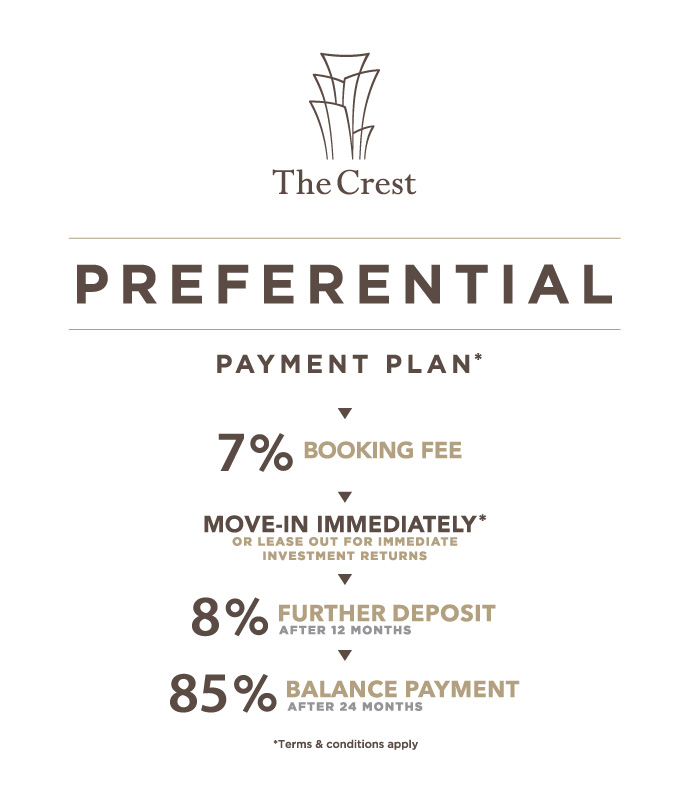
There is also the Deferred Payment Scheme (DPS), which is not always available. This may sometimes be offered for new launch properties, which are completed but not yet sold. The DPS requires 20 per cent down payment, and can allow you to wait for as long as two years before monthly loan repayments begin*.
We’re less inclined to highlight this as a solution though, as units sold under this scheme tend to be priced at a premium. It’s also risky from a financial perspective, as your income situation may change two years from now – if you subsequently cannot secure a loan for the unit, then the 20 per cent you’ve paid is forfeit; and some other penalties may apply.
*The terms can vary between different projects, so check the fine print!
4. Consider buying without renovating, if that would help with the costs
If you have money set aside for renovations, consider using it for your down payment instead. Remember there’s no rule that you must renovate right away. If you can find a resale unit where the renovations are new (e.g., done within the past five years), consider buying it first and living with the existing set-up.
You can then save up for a while, and get around to renovating it later. Remember that the longer you wait in a property boom, the higher the price may climb.
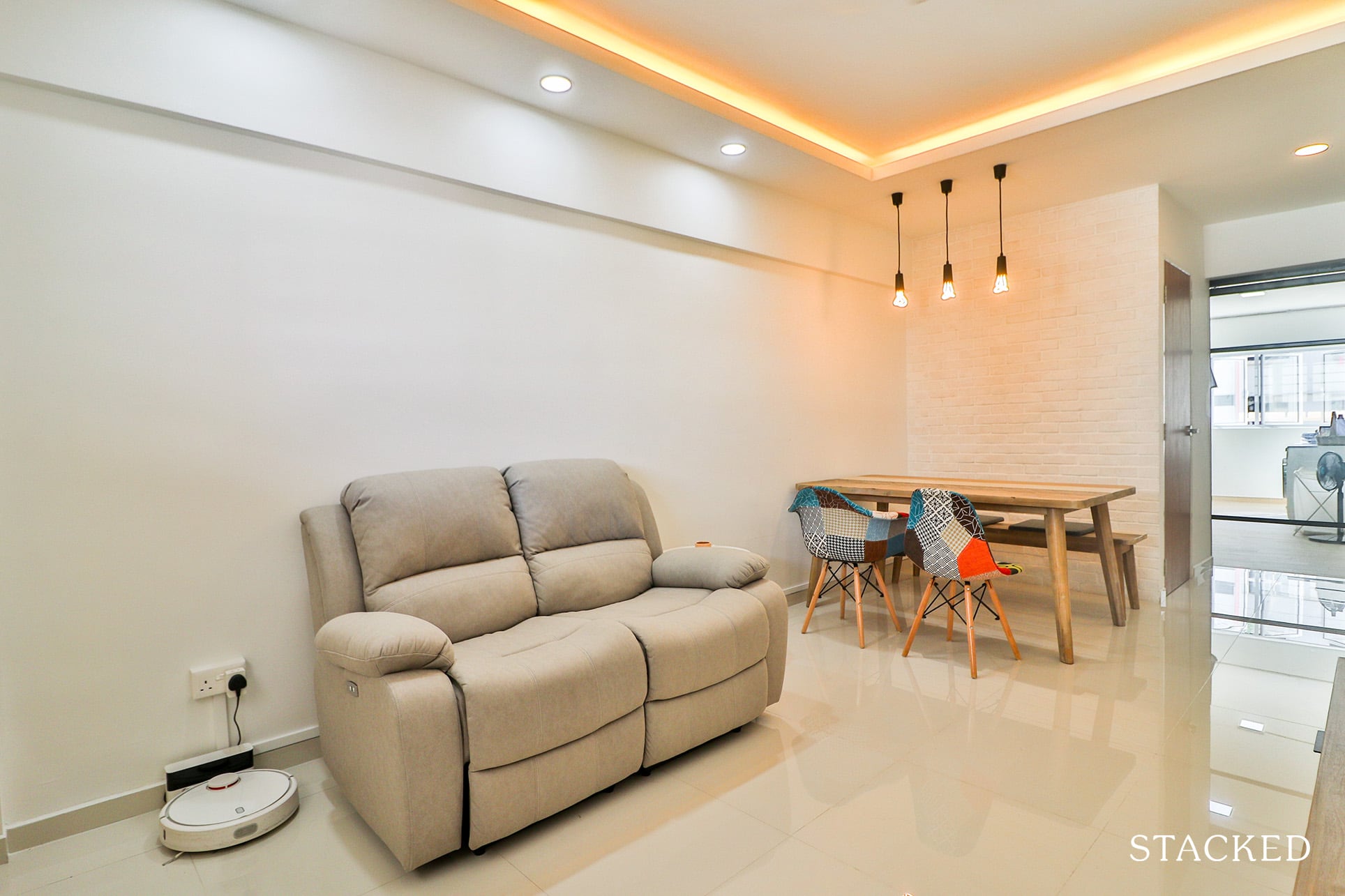
The downside is that this may rule out some of the older – and hence much cheaper – resale flats. It’s a bit of a balancing act: you want a unit where the renovations are recent enough to be liveable, but not so new that there’s a premium attached.
One example to watch out for is five-year-old resale flats. While these may save you some renovation costs, the premium attached – in the form of Cash Over Valuation (COV) – may be difficult to justify.
We explained in this earlier article why these flats can command exceptionally high prices.
Do also consider that while buying a newly renovated unit may cost more, because the reno is effectively factored into the house price – you are essentially able to take a loan for it. In contrast, buying a cheaper home that needs significant renovation may mean that you may have to come out with more cash to pay for the renovation. Remember, the maximum home renovation loan you can take is $30,000 (unless you take up more than one with a different bank).
Finally, if buying would stretch your finances too far, don’t be afraid to rent first
In a pricey market with rising interest rates, you can set aside old beliefs like “renting is wasting money.” 2023 is turning out to be a volatile year: combined with the Sellers Stamp Duty (SSD), and a 15-month wait-out to buy resale flats after selling a private home, it will be tough to offload any properties that become a liability.
If you need to, err on the side of caution and rent. We know it’s painful given the high costs in the rental market at the moment, but it still beats a bad buy at a property peak.
Stay with us on Stacked as we seek solutions in the 2023 market, and remember you can reach out to us directly for any help you need.
If you’d like to get in touch for a more in-depth consultation, you can do so here.
Have a real estate question, or not sure what your options are? Email us at stories@stackedhomes.com.
Ryan J. Ong
A seasoned content strategist with over 17 years in the real estate and financial journalism sectors, Ryan has built a reputation for transforming complex industry jargon into accessible knowledge. With a track record of writing and editing for leading financial platforms and publications, Ryan's expertise has been recognised across various media outlets. His role as a former content editor for 99.co and a co-host for CNA 938's Open House programme underscores his commitment to providing valuable insights into the property market.Read next from Property Advice

Property Advice Should We Buy An Old 99-Year Leasehold Condo To Live In: Will It’s Value Fall When The Lease Runs Out?

Property Advice We Own A $800K 1-Bedder And A $1.1M 3-Bedder: Is It Possible To Upgrade To A 4-Bedder Condo?

Property Advice I Own A 55-Year-Old HDB Flat, But May Have To Sell — Can I Realistically Buy A Freehold Condo With $700K?

Property Advice We Own A 2-Bedder Condo In Clementi: Should We Decouple To Buy A Resale 3 Bedder Or Sell?
Latest Posts

On The Market Here Are The Cheapest 4-Room HDB Flats in Central Singapore You Can Still Buy From $490K

Pro How A Once “Ulu” Condo Launched In 1997 Became A Top Performer

Editor's Pick I Reviewed A New Launch 4-Bedroom Penthouse At Beauty World

Property Market Commentary When Renting In Singapore Is The Smarter Move — And Buying Can Wait

Editor's Pick Why Singaporean Families Are Looking At This Landed Enclave From Around $4M

Singapore Property News Lentor’s First Condo Is Complete — The Early Profits May Surprise You

Editor's Pick A Wave Of New HDB Resale Supply Is Coming In 2026: Here’s Where To Find Them

On The Market These Are Some Of The Cheapest 5-Room HDB Flats Left In Central Singapore

Pro This 698-Unit Ang Mo Kio Condo Launched At The Wrong Time — And Still Outperformed Peers

Singapore Property News $281.2M in Singapore Shophouse Deals in 2H2025 — But That Number Doesn’t Tell the Full Story

Property Market Commentary 5 Key Features Buyers Should Expect in 2026 New Launch Condos

Editor's Pick What “Lucky” Singaporean Homebuyers Used To Get Away With — That You Can’t Today

Property Investment Insights These Resale Condos In Singapore Were The Top Performers In 2025 — And Not All Were Obvious Winners

Singapore Property News CapitaLand–UOL’s $1.5 Billion Hougang Central Bid May Put Future Prices Above $2,500 PSF

Singapore Property News Why New Condo Sales Fell 87% In November (And Why It’s Not a Red Flag)


